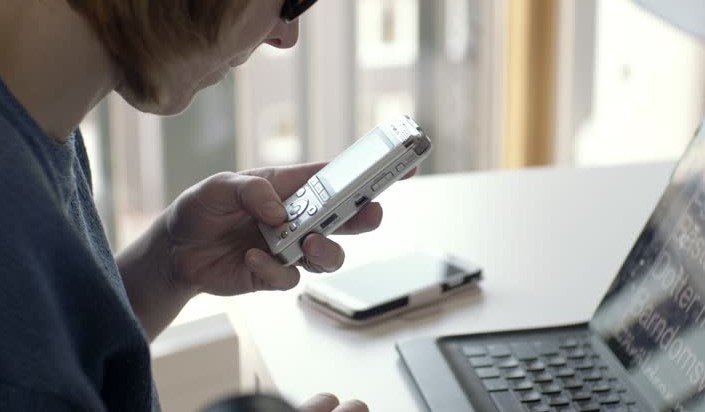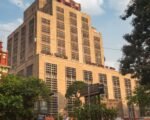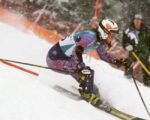MinION brings nanopore sequencing to the classroom, sparking scientific curiosity and real-world discovery
At first glance, the MinION doesn’t look like much. It’s about the size of a stapler, plugs into a laptop via USB, and has no blinking lights or robotic arms. But this summer, the humble device is quietly flipping the script on how students at Bellevue College are learning to decode the building blocks of life.
Thanks to a Lockwood Foundation Grant, BC students in Life Sciences and Molecular Biosciences programs are getting hands-on experience with nanopore sequencing — a method so advanced that until recently, it lived mostly in high-tech labs and biotech startups. Now, it’s sitting on classroom tables next to notebooks, pipettes, and a few cautiously handled crab larvae.
The future of gene sequencing, now in student hands
The MinION uses Oxford Nanopore Technology, or ONT, which falls under what’s now considered fourth-generation gene sequencing. Unlike its predecessors — bulky, expensive, and often limited to short fragments — ONT reads genetic material by sensing how electrical current changes as DNA strands pass through tiny biological pores.
This lets it sequence long strands of DNA in real time. And that’s not just cool — it’s useful.
Dr. Stacey Alvares, one of the faculty members who led the MinION rollout at BC, knows exactly what that means. “We’re no longer talking about sequencing in theory,” she said. “Students are watching the data flow in as they sit at their laptops.”
They’re not just learning about DNA. They’re analyzing it, right there, in the moment.

From the Puget Sound to the student lab bench
One of the pilot experiments this summer is as local as it gets. Partnering with the MaST Center Aquarium in Des Moines, BC students are sequencing DNA from crab larvae scooped up from Puget Sound.
Why crabs?
Because identifying the exact species of crab larvae helps scientists track marine populations. These patterns offer early signs of ecological changes — population booms, declines, or migrations that can shape fisheries and environmental policies.
Students are learning, in real time, how to:
-
Extract DNA from crustacean samples
-
Prepare the samples with specialized reagents
-
Feed the samples into the MinION
-
Analyze species identity based on the raw sequence data
For many, it’s the first time they’ve felt the rush of doing real research — not simulations or pre-cooked data, but messy, exciting, unpredictable science.
Not just for sea creatures: microbes in earwax and biomedical promise
Another faculty member, Jason Fuller, is taking the MinION in an entirely different direction.
He’s guiding students through a pilot that examines microbial communities found in — yes — earwax. It’s quirky, for sure, but the implications go far beyond novelty.
Different microbial profiles can indicate different health conditions. With accurate, ultra-long sequencing, the MinION could someday help distinguish between harmless bacterial strains and those linked to infections or chronic conditions.
In other words, today’s student pilot project could be laying the groundwork for tomorrow’s low-cost diagnostics.
One-liner: Earwax is gross — but weirdly full of useful data.
It’s not plug-and-play — and that’s the point
The MinION may be portable and relatively affordable, but it’s no cakewalk.
Preparing DNA samples is a meticulous process. Contamination can throw off the whole sequencing run. Faculty had to spend weeks learning how to extract DNA correctly, use reagents efficiently, and understand the quirks of the software.
As Dr. Alvares put it, “It’s not just about having the device. It’s about understanding the whole pipeline from sample to result.”
That’s where the Lockwood Foundation Grant plays a huge role. It gives faculty the resources — and breathing room — to experiment.
And yes, sometimes fail.
But that failure is part of the experience. Instead of shielding students from the messy parts of research, the program is immersing them in it.
What makes the MinION special — and why it matters
To understand how revolutionary this device is, you need to look at how it stacks up.
| Feature | Traditional Sequencers | MinION (ONT) |
|---|---|---|
| Read Length | Short (<1,000 base pairs) | Ultra-long (>1 million bp) |
| Setup Cost | $$$$ | $ |
| Portability | Stationary | Pocket-sized |
| Real-time Output | No | Yes |
| Maintenance & Complexity | High | Moderate |
The MinION breaks the mold. It’s low-cost, accessible, and real-time — all without sacrificing data quality.
That’s a big deal for students. Instead of reading about genomic data on paper, they’re literally watching genes unravel before their eyes.
Opening doors for future scientists — and new types of learning
The bigger goal isn’t to create a classroom full of future geneticists. It’s to show students that science isn’t confined to expensive labs or elite institutions.
When BC students work on crab DNA or microbial earwax, they’re part of something larger — the democratization of genomics.
That includes:
-
Letting students with no previous lab experience get their hands dirty (sometimes literally)
-
Helping first-generation college students see themselves in STEM
-
Connecting coursework with urgent, real-world problems like environmental monitoring and public health
Dr. Reza Forough, another core faculty member in the pilot, sees it this way: “If we can lower the entry barriers to this kind of technology, we change who gets to do science. And that changes everything.”








